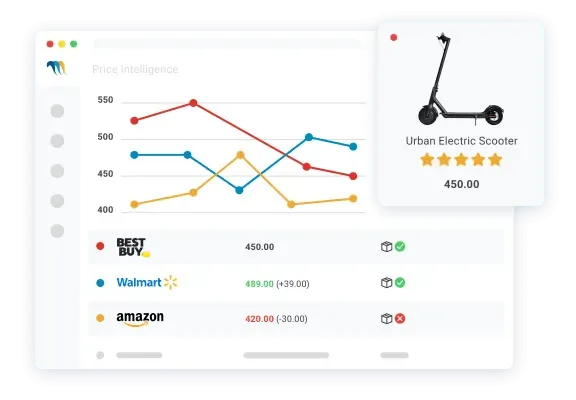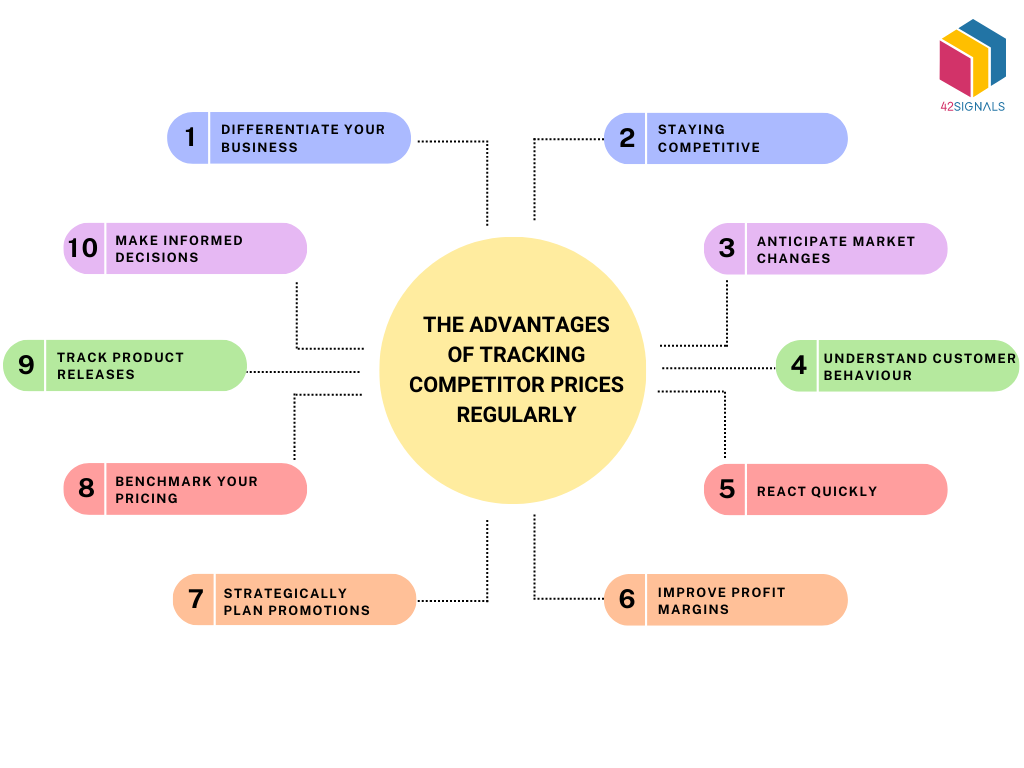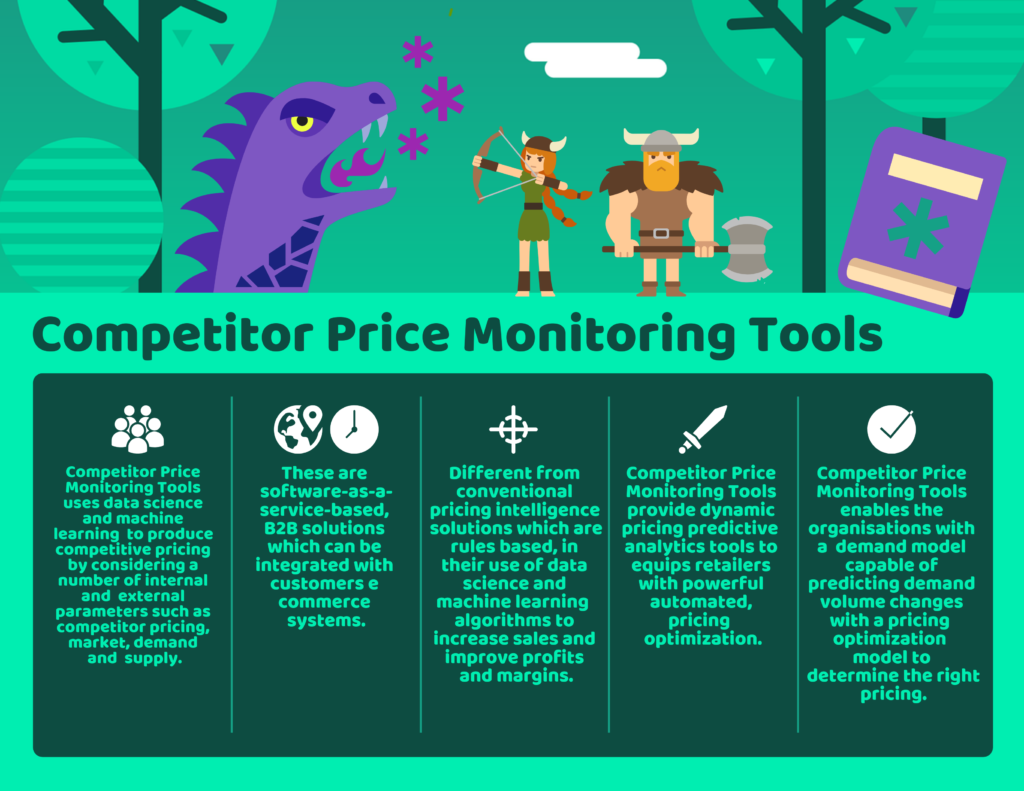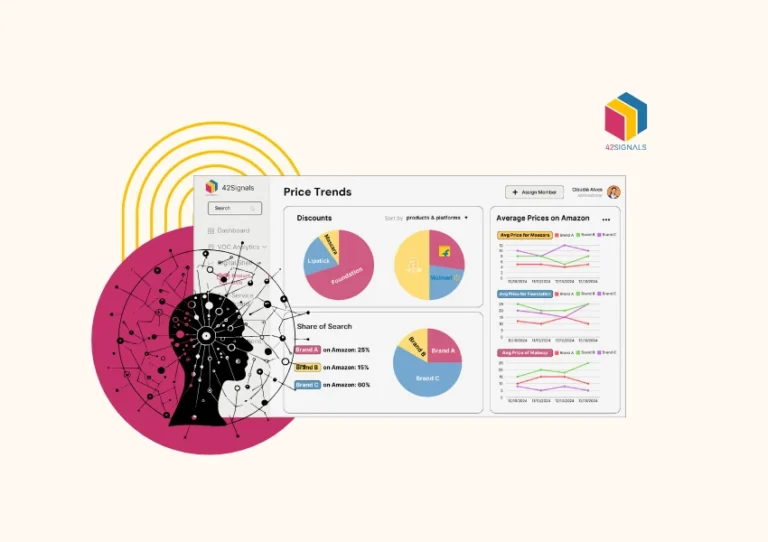What is Competitor Price Monitoring
Competitor Price Monitoring is regularly tracking and keeping an eye on what your competitors are charging for their products or services. By doing so, you can gather valuable insights into market trends, identify pricing opportunities and threats, and make informed decisions about your own pricing strategy. It may not be as thrilling as spying on your frenemies, but it’s a crucial part of staying ahead of the curve.

Image Source: Mayple
Whether you do it manually or through automated tools and software, monitoring your competitors’ prices is a smart move that can help you maximize your profits and stay competitive in the market.
How Does Competitor Price Monitoring Work?
So, how does Competitor Price Monitoring actually work? Well, it’s not rocket science, but it does require some attention to detail. You need to regularly check and analyze your competitors’ prices to see how they’re changing over time.
This can involve manual methods like checking their websites and social media pages or using automated tools or web scraping services that scrape data from multiple sources.
Once you’ve collected the data, you can start to identify patterns and trends and use that information to adjust your own prices accordingly. Of course, you also need to keep in mind other factors like your own costs and profit margins, but by monitoring your competitors’ prices, you can stay competitive and make sure you’re not missing out.
Advantages of Tracking Competitor Prices Regularly
Regularly monitoring your competitors’ prices is a key strategy for gaining a competitive edge in business. By keeping track of their pricing, you can identify opportunities, mitigate risks, and make informed decisions about your own pricing strategy. Below are some of the advantages of competitor price monitoring:

Staying competitive
By tracking your competitors’ prices, you can stay informed about the latest market trends and adjust your own prices accordingly to stay competitive.
Anticipate market changes with competitor price monitoring
Tracking competitor prices can also help you anticipate market changes and adjust your pricing strategy proactively to stay ahead of the game.
Understand customer behaviour
Monitoring how your customers respond to changes in pricing can help you gain insights into their behaviour and preferences, which can inform your future pricing decisions.
React quickly
By keeping a close eye on your competitors’ prices, you can react quickly to changes in the market and adjust your own prices before your competitors do. It can also help you mitigate risks and avoid potential losses, by enabling you to respond quickly to pricing changes that could negatively impact your business.
Improve profit margins
Adjusting your prices based on competitor analysis can help you optimize your profit margins and ensure that you’re not leaving any money on the table.
Strategically plan promotions
With competitor price monitoring, you can also plan strategic promotions and discounts that can help you win over customers and gain an edge in the market.
Benchmark your pricing with competitor price monitoring
Competitor price monitoring can also help you benchmark your pricing against your competitors and ensure that you’re offering competitive prices. This can help you maintain your market position and attract new customers.
Track product releases
Tracking your competitors’ prices can also help you track their new product releases and assess how they’re pricing those products. This can inform your own product development strategy and help you identify opportunities for innovation.
Make informed decisions
Regularly tracking your competitors’ prices can provide you with valuable data that you can use to make informed decisions about your own pricing strategy, which can ultimately lead to better business outcomes.
Differentiate your business
Competitor price monitoring can help you identify pricing opportunities that your competitors have missed. By developing unique pricing strategies, you can differentiate your business and attract customers who are looking for something different. This can help you build a strong brand identity and a loyal customer base.
Let’s dive deeper into the last two advantages of tracking competitor prices: making informed decisions and differentiating your business.
Competitor Price Monitoring for Better Pricing Strategy and Differentiation

Image Source: Pat Research
Inform Your Pricing Strategy
Businesses that use competitor price monitoring to inform their pricing strategy are ahead of the game. By analyzing and comparing prices with their competitors, they can identify trends and shifts in consumer behavior, and make informed decisions about their pricing strategy.
It’s like having a crystal ball that tells you exactly what your customers are willing to pay for your products or services.
Differentiate Your Business
With so many competitors vying for attention, it can be challenging to differentiate your business and stand out from the crowd. By regularly monitoring your competitors’ prices, you can identify pricing opportunities that others may have missed and develop unique pricing strategies that set you apart from the competition.
What You Stand to Lose
If you think that not monitoring your competitors’ prices won’t affect your business, think again. Ignoring the competition can result in significant losses for your business.
Not only can you miss out on pricing opportunities, but you can also fall behind the competition and lose customers to businesses that offer better pricing. In addition, failing to track competitor prices can result in pricing strategies that are out of sync with the market, leading to decreased sales and profitability.
Here’s How 42Signals Can Help with Competitor Price Monitoring
At 42Signals, we understand the importance of competitor price monitoring in the world of eCommerce. That’s why we offer a comprehensive eCommerce analytics tool that helps businesses track their competitors’ prices and identify opportunities to optimize their pricing strategy.
With our tool, you can monitor prices, saving you valuable time and resources. But wait, there’s more! Our tool also provides valuable insights into market trends and consumer behaviors, so you can make the right decisions that matter.
Schedule a demo with us today to see the benefits of our platform.
Frequently Asked Questions
How to check competitor price?
You can check competitor pricing using both manual and automated methods:
- Manual Browsing – Visit competitor websites, marketplaces (like Amazon or Flipkart), or Google Shopping to view pricing for similar products.
- Price Comparison Websites – Use platforms like PriceGrabber or Google Shopping to compare prices side by side.
- Automated Tools – Use competitor price monitoring tools like 42Signals to track prices in real time across multiple channels.
- Mystery Shopping – Purchase competitor products to uncover hidden costs (shipping, bundles, in-cart discounts).
How to do a competitor pricing analysis?
A competitor pricing analysis involves evaluating your competitors’ pricing strategies to identify where your products stand in the market. Here’s how to do it:
- ✅ Identify Key Competitors – Focus on brands offering similar products to your target audience.
- ✅ Collect Price Data – Track base prices, discounts, shipping costs, and promotions.
- ✅ Compare Pricing Models – Are they using premium pricing, bundle deals, or volume discounts?
- ✅ Assess Value Offered – Compare product features, customer reviews, return policies, and brand perception alongside price.
- ✅ Use Pricing Index – Calculate how your prices compare to the average or leading competitors (e.g., Price Index = Your Price / Competitor Price).
What is competitor-based pricing method?
Competitor-based pricing is a strategy where a business sets its product prices by analyzing the pricing of similar products offered by competitors.
- You can price lower to attract budget-conscious buyers
- Match competitors to stay competitive
- Or price higher if you offer added value, superior service, or a premium brand
Example: A new electronics brand might price its smartwatches just below Apple or Samsung to attract price-sensitive customers while building credibility.
What is pricing intelligence and competitor monitoring?
Pricing intelligence is the practice of using real-time market data to optimize pricing strategies. It includes monitoring:
- Competitor prices
- Market trends
- Customer demand
- Product availability
Competitor monitoring is a key part of this and involves tracking competitors’:
- Prices and promotions
- Stock availability
- Digital shelf presence
- Product positioning
Tools like 42Signals provide pricing intelligence dashboards that allow brands to make informed, data-driven decisions instead of relying on guesswork. They enable dynamic pricing, protect brand value, and support revenue optimization.





